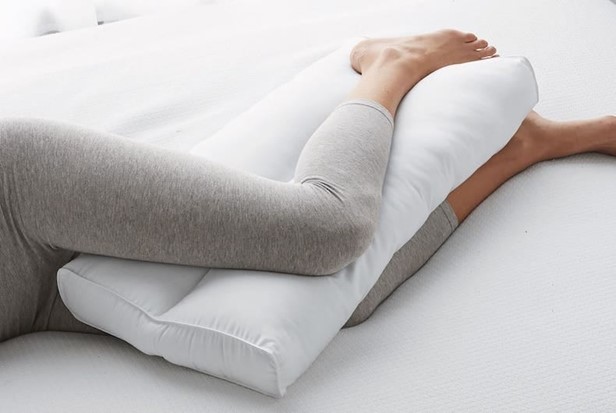A nurse is caring for a client who is postoperative following a total left hip arthroplasty. Which of the following actions should the nurse take?
Cross the client's legs when sitting in the recliner.
Provide a heating pad to the operative hip.
Place a pillow between the legs when turning the client to their side.
Have the client lean forward when assisting them out of the bed.
The Correct Answer is C
Choice A rationale:
The nurse should not cross the client's legs when sitting in the recliner following a total left hip arthroplasty. Crossing the legs can put strain on the operative hip and may increase the risk of dislocation or other complications.
Choice B rationale:
Providing a heating pad to the operative hip is not recommended. Heat can increase blood flow to the area and may lead to increased swelling and potential complications in the postoperative period.
Choice C rationale:

Placing a pillow between the legs when turning the client to their side is the correct action. This technique is known as the "abduction pillow”. or "wedge pillow.”. It helps maintain proper hip alignment and prevents the operated leg from crossing the midline, reducing the risk of dislocation and promoting healing.
Choice D rationale:
Having the client lean forward when assisting them out of the bed is not appropriate after a total left hip arthroplasty. Leaning forward can put strain on the hip joint and increase the risk of injury.
Nursing Test Bank
Naxlex Comprehensive Predictor Exams
Related Questions
Correct Answer is A
Explanation
Choice A rationale:
Completely irrigating one eye before irrigating the second eye is the correct action to take when a client receives a chemical splash on their face. This approach helps prevent the potential spread of the chemical from one eye to the other. Irrigation should be done immediately to flush out the chemical and minimize its harmful effects.
Choice B rationale:
Informing the client to blink their eyes rapidly during the irrigation process is not recommended. Blinking may exacerbate the dispersion of the chemical and could lead to further damage to the eyes. Instead, the client should keep their eyes open during irrigation.
Choice C rationale:
Delaying the irrigation process until the type of chemical in the eyes is identified is not appropriate. Time is critical in minimizing the impact of the chemical on the eyes. Immediate irrigation is essential, regardless of the type of chemical, to remove the substance from the eyes.
Choice D rationale:
Asking the client to count the number of fingers held up by the nurse before irrigating their eyes is not relevant in this situation. The priority is to initiate immediate irrigation to remove the chemical from the eyes. Assessing the client's visual acuity can be done later in the evaluation process after the eyes have been irrigated.
Correct Answer is A
Explanation
Choice A rationale:
Applying clean gloves when removing the old dressing from the catheter site is essential to prevent infection and maintain an aseptic technique during peritoneal dialysis catheter care. Gloves protect both the nurse and the patient from potential contamination.
Choice B rationale:
Cleansing the area by using a circular motion beginning at the catheter site and moving outward is not the correct technique. When caring for a dialysis catheter, the nurse should cleanse the site using an outward, circular motion starting from the insertion site to minimize the risk of contamination.
Choice C rationale:
Using warm water to cleanse the catheter site is not recommended. The peritoneal dialysis catheter site should be cleaned with an appropriate antiseptic solution or disinfectant, as warm water alone may not effectively remove bacteria or prevent infections.
Choice D rationale:
Placing an occlusive dressing over the catheter site after cleaning is not the standard practice for peritoneal dialysis catheter care. Typically, a clean, dry dressing is applied to the catheter site after cleaning to keep it clean and dry, but it should not be occlusive.
Whether you are a student looking to ace your exams or a practicing nurse seeking to enhance your expertise , our nursing education contents will empower you with the confidence and competence to make a difference in the lives of patients and become a respected leader in the healthcare field.
Visit Naxlex, invest in your future and unlock endless possibilities with our unparalleled nursing education contents today
Report Wrong Answer on the Current Question
Do you disagree with the answer? If yes, what is your expected answer? Explain.
Kindly be descriptive with the issue you are facing.
